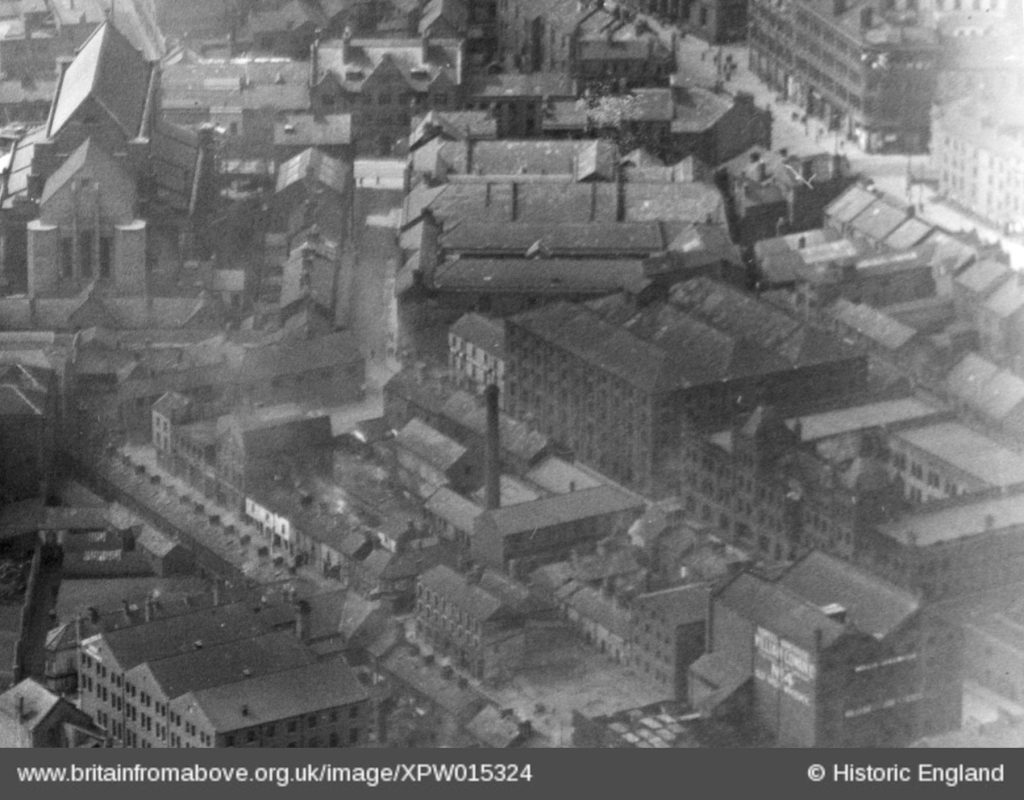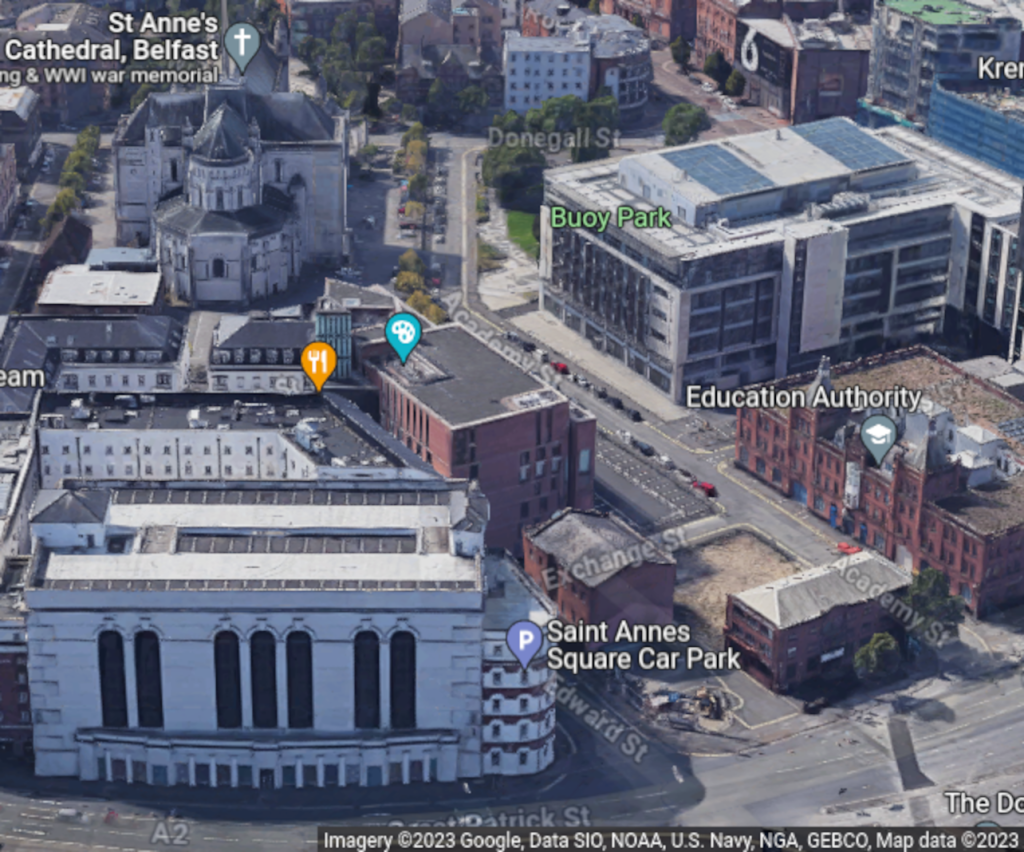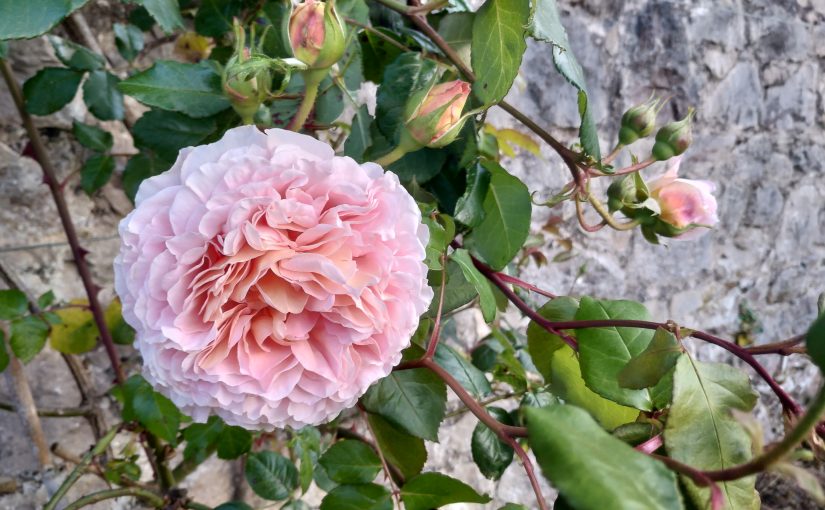Sally Moore was a blind traditional Irish harper in Belfast in the mid 19th century. We don’t have very much information about her. This post is to collate the references and to try and say something useful about her. Hopefully in time more references will be found.
I first came across Sally Moore when I was reading through the list of traditional harpers which was written down by the revivalist William Savage in about 1908, from information told to him by the harper and tradition-bearer George Jackson.
Savage’s notes survive in photocopied sheets in the Archive of the National Museum of Ireland. There are two separate sets of notes, a rough draft presumably done in 1908 direct from George Jackson’s speaking, and then a neat expanded version presumably done by Savage from memory in around 1911, after Jackson was dead.
The rough version reads:
Sally Moore Academy St
NMI archive, File AI.80.019
The neater version reads:
Sally moore – [
NMI archive, File AI.80.019??]Academy St good player I think she
was in Dr Corrys panorama of Ireland when he
travelled america. This is not too reliable
The crossed out letters may say “with” but they have been deleted so I don’t think they tell us anything. We can see here that Jackson’s information is only her name and her address, on Academy Street; Savage has added the “not too reliable” information about Dr. Corry.
I think that the people that George Jackson was talking about were all traditional Irish harpers playing on wire-strung Irish harps. The earliest person he talks about I think is Valentine Rennie, who died in 1837 and who had taught Pat Murney, who was George Jackson’s teacher. All the other names seem to be from the generation or two after Rennie’s time, i.e. contemporaries of or students of Pat Murney. So from this alone we can start to vaguely place Sally Moore: she could have been a student of Valentine Rennie or his successor Alexander Jackson at the Irish Harp Society school before 1840; or she could have been a student of Pat Murney in the late 1840s or early 1850s.
An anonymous mention
Our next source is a list of harpers in Belfast in 1871. This is part of a rather naive discussion in the Belfast newspapers, about the possibility of organising a revival of Irish music.
Almost as an aside, M.C. says
There are some three or four players on the Irish harp yet in Belfast – Patrick Murney, in Mustard Street; a blind woman, in Academy Street; a player on the Shankhill Road – exclusive of Begley, now in England
Belfast News Letter 15 Jun 1871 p3
We can check my timeline to help us identify who these different people are. Obviously we see Murney and Begley named. I have already suggested that the “player on the Shankill Road” was Tom Hardy; and I think it most likely that the “blind woman in Academy Street” may have been Sally Moore.
Other harpers still around in Belfast at that point include Samuel Patrick and of course George Jackson, though Jackson was not a professional and probably had no public profile. There were also harpers in Dublin in 1871 (Paul Smith and Hugh O’Hagan), plus William Griffith and Peter Dowdall presumably in Drogheda, and Matthew Wall in America.
You’ll notice that all these other people I have mentioned are men. I have 71 names on my timeline of traditional Irish harpers from 1792 through to 1909, and only 7 of them are women (10%); i.e. the traditional Irish harp scene was a 90% male world through the 19th century.
Academy Street
The only concrete piece of information we have about Sally Moore is that she lived on Academy Street in Belfast.
Academy Street runs down the left of St Anne’s Cathedral. This aerial photo from 1926 is taken from behind the cathedral; you can see Academy Street running from the very bottom right corner, diagonally up to the centre of the photo, and then running directly away from the camera towards the top centre, where it joins Donegall Street (which runs left to right across the top of this photo).

Most of these old buildings on Academy Street were destroyed in the 1940s, and so Academy Street today looks nothing like it did in Sally Moore’s time. You can recognise the Education Authority building in both photos; it was built as a warehouse in about 1900. The Cathedral has been hugely extended in recent decades. Everything else has gone.

I don’t yet know where on Academy Street Sally Moore may have lived; I am not finding her in any of the street directories.
My map below shows Academy Street, and also shows places around about where other traditional harpers were living.
Dr Corry’s Panorama
I have already written a lot about Dr Corry’s panorama, in my post about Roger Begley. The Panorama or Diorama was a kind of multimedia stage show of the late 19th century, perhaps even a precursor of cinema. The main feature was enormous painted scenes, which were stored on long canvas rolls. Each scene in turn was displayed behind the stage before being rolled along to the next one. The scenes were dramatically lit, and there were live performers – musicians, singers, and speakers who gave a kind of commentary on the scenes. As far as I can tell there were loads of this kind of show with different themes touring all over the place. Tom Hardy is the first harper I have found working for one of these shows, in April 1863.
Dr Corry is perhaps the most famous proprietor of one of these shows; he seems to have been inspired by seeing one in America in the early 1860s; he came back to Belfast and launched his Diorama or Panorama of Ireland at the end of 1864. Roger Begley was hired by Dr. Corry at the beginning of 1865 to perform every day in the sell out “National Diorama”, through until the summer of that year when the show seems to have closed for refurbishment. I think that the scenes would wear out pretty quick, and perhaps a new set of paintings was made every year.
William Savage tells us perhaps in 1911:
… I think she
NMI archive, File AI.80.019
was in Dr Corrys panorama of Ireland when he
travelled america. This is not too reliable
However I don’t have any solid information about Dr Corry’s Diorama going to America. There were other similar shows. This was a few years after George Jackson had died (in 1909), and so presumably was from Savage’s memory. Savage did not know any of the other harpers; I think his only connection into the harp tradition was his one meeting with George Jackson, when Jackson was stringing Savage’s reproduction medieval harp.
So at present I am thinking that this information is more unreliable than useful, and in the absence of any other information about Sally Moore playing in the Diorama or Panorama stage show in America or back home, I think we can just ignore this for now.
Possible death record?
I found a death record for Sarah Moore, who died in Belfast Workhouse on 18th November 1872, aged 40 (i.e. born in 1832). She is listed as female, a spinster, and her occupation is given as “musician”.
I don not know if this is our Sally Moore the blind traditional harper, or not.
If it is her, she would have been only 8 years old when the Irish Harp Society School in Talbot Street closed, and so I think it is unlikely that she learned the harp there. Perhaps, then, it is more likely she learned from Patrick Murney; or perhaps even from one of the other pupils of the Society School. The only traditional Irish harpers I know of who were teaching after the school closed in 1840 were Pat Murney in Belfast, and Hugh Fraser in Drogheda. I have written before how I think that Begley, Hardy, and Jackson appear to have been classmates under Murney, perhaps in around 1850, because Jackson said that he knew both Hardy and Begley personally; they are the only two on his list that he said that for. It is possible that Sally Moore learned from Murney before or after the three boys were studying under him; it is also possible that she could have been studying at the same time, but the boys and girls may have been kept apart due to 19th century ideas of decency. I’m just guessing wildly here.
I suppose the next thing to do would be to try and find this Sarah Moore in the Workhouse records, to see if there is more information. But I am not sure how to do this – the records are at PRONI but I don’t know how they are organised or if there are lists of inmates for the 1870s.
But certainly it seems very plausible that Sally Moore, as a blind professional traditional harper in the inherited tradition through the mid 19th century, would have lived in poverty, and not married, and died in the workhouse, forgotten and ignored to posterity, like so many of her peers.

Interesting and very sad!